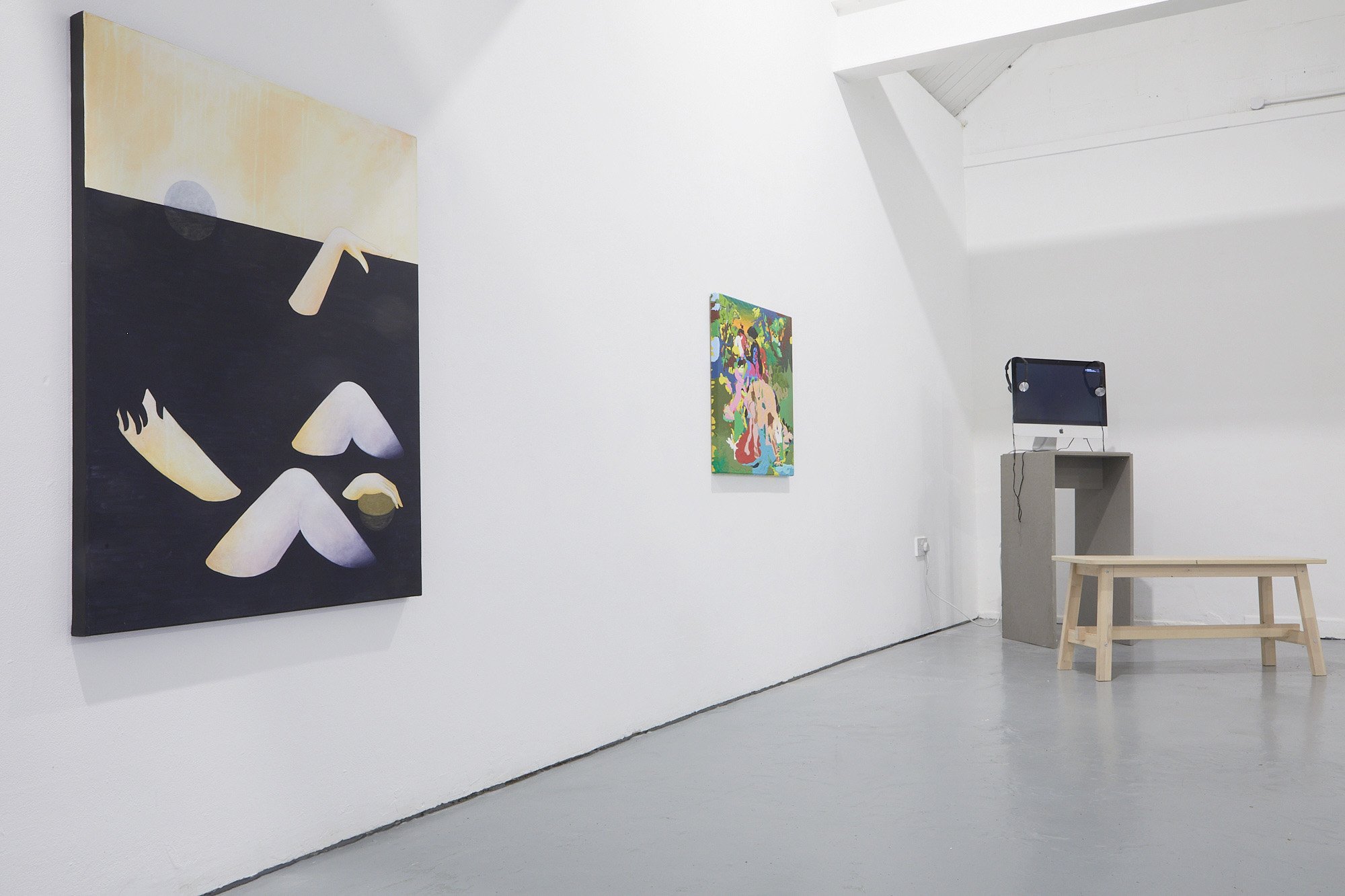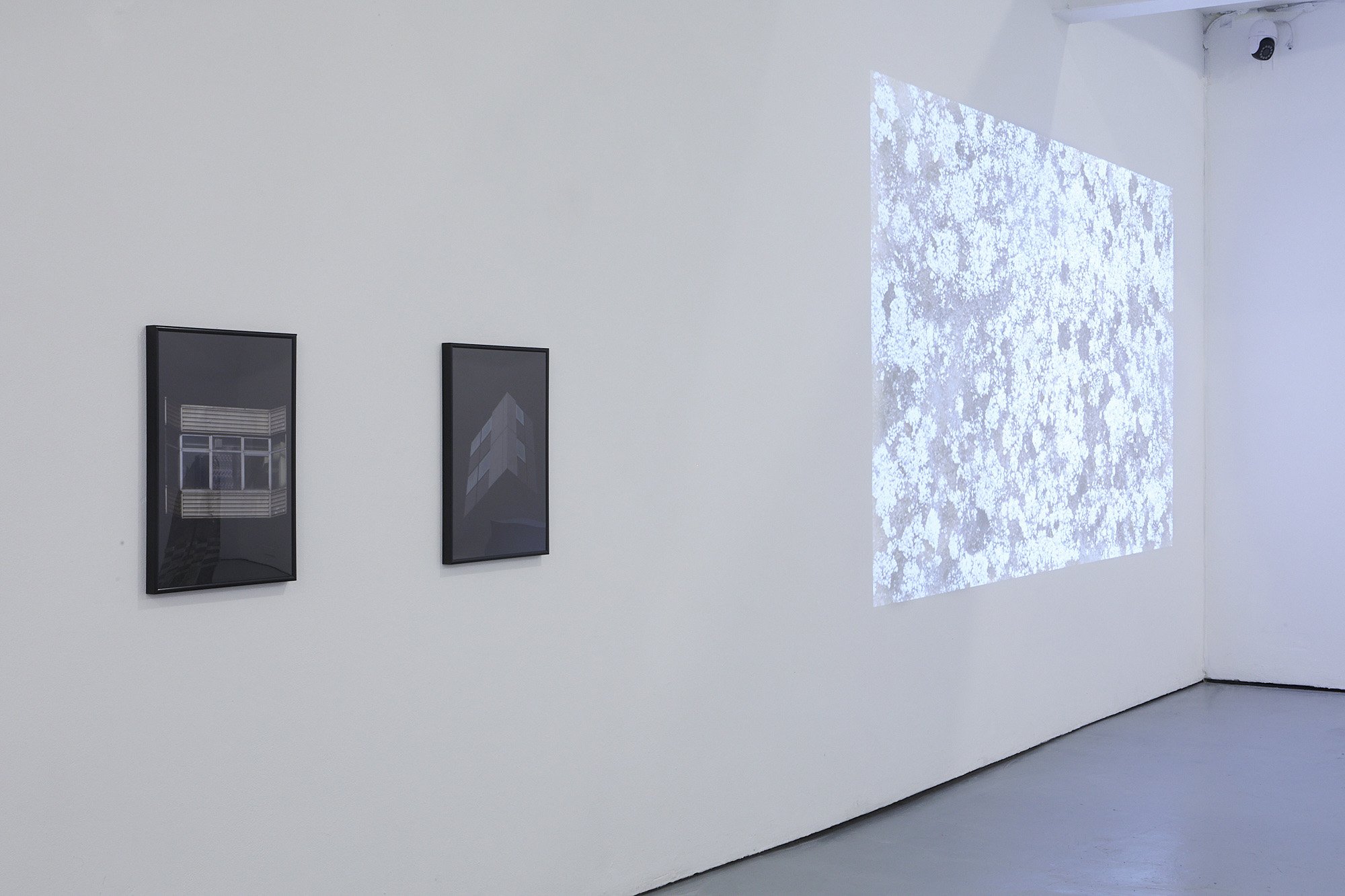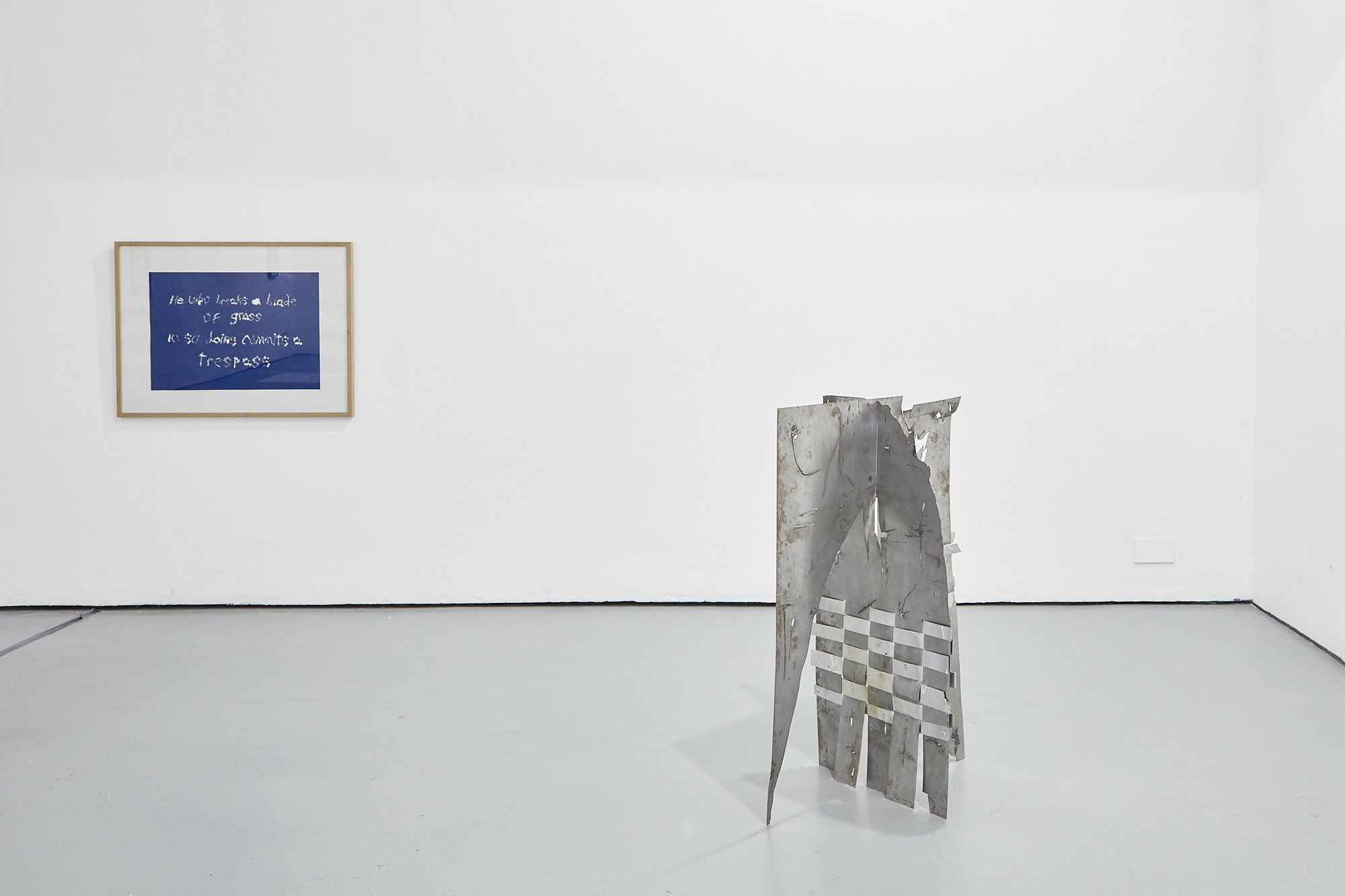#164 Members’ Show 2023
OUTPOST Members Show
Selected by Hannah Wallis
Charlie Barkus | Matthew Benington | Emily Coghlan | Charlotte Cullen | Charlotte Dawson |
Clare Jarrett | Ngo Chun Tse | Amir Chasson | Karis Upton
free to visit
opening times: 24 August - 1 October | Thursday to Sunday, 12 - 6pm
address: OUTPOST Gallery, 10b Wensum Street, Norwich, NR3 1HR
A conversation between Emily Stewart and Hannah Wallis
OUTPOST’s Emily Stewart and Hannah Wallis, curator of the 2023 Member’s Show, sat down to talk about the themes of the exhibition, accessibility in galleries and the importance of place on artistic practice.
Emily Stewart (ES): How would you sum up the 2023 Member’s Show in a few words?
Hannah Wallis (HW): A group of brilliant practices that speak to a shared vulnerability.
ES: The guiding principle of this exhibition is one based on liminal spaces and places of destruction, reconstruction and reparation. Can you expand on this overarching theme?
HW: I am always very much guided by an instinct when selecting works for exhibitions and as the artworks started to come together I began to notice an underlying sensation that they were providing for me. I used the words ‘guiding principle’ as I rarely work with fixed themes, but there is a resonance that began to emerge across this cohort of works that speaks to a moment in time, this time we are living in that is complex and often difficult. These artworks together all speak in some way towards destruction, reconstruction and reparation and/or an expanse between these things, whether via imagery, materiality or through the narrative of the work.
Each of the works shares a vulnerability about our connection with the world, often embodied and in connection with our surroundings. There is a strong sense of things on the edge, of an in-betweenness, a space between knowing and not knowing, and along with this, spaces of repair.
ES: Did you initially decide on a guiding theme for this exhibition ahead of selecting the exhibiting artists, or did you find connections between the Member’s artworks that influenced it?
HW: I didn’t start with a theme, I rarely do when I am thinking about curating or working with artists, as I am always guided much more by the artists themselves. Either by what they are telling me or showing me directly, or by some emerging instinct as I touched on above.
So, the connections for this selection came about quite softly and generatively, through the process of searching the archive and choosing the works I was drawn to at this particular moment in time. The more time I spent with the archive, the more this particular set of practices seemed to echo material and abstract connections.
ES: This Member’s Show includes a variety of different types of artworks in a range of mediums, such as paintings, sculptures, prints, photography and video. Did you make a conscious decision to feature a range of disciplines when making your selections?
HW: Perhaps not an overly conscious decision as I have never been drawn to just one or two mediums. Art for me has always been about experimentation and the multiple ways that we tell a story or share an idea, so I think this leads to a natural interest and curiosity in a multitude of disciplines. I do know that one thing I am always conscious of is a tactility and rhythm to the materiality, especially in a show like this - when selecting from an archive that is overflowing with ideas and methodologies, it is only right that the members show share even a fraction of that, showcasing the breadth of artistic practices being explored at OUTPOST and in the city right now.
“A key thing to remember about access work is to start from where you are at, and commit to what you can long-term, rather than promising everything in the short-term without the resources to sustain the provisions.”
ES: Being based in Birmingham and undergoing this process almost entirely remotely, how was your experience of curating from such a distance?
HW: There is a real joy to having been able to undertake the process amongst my other commitments that has been afforded by technology, however it has been interesting to be so removed from the work in a way that I am not used to. I am usually right up there in the studio of the artists I work with, touching the artworks and checking in on the progress of things, and this was a much more hands off approach that allowed me a freedom to choose the works in a way that I might not have otherwise. However the process was yet another reminder, through the mistakes I made as well as the joys, that always artists are at the heart of what we do and why I am here.
ES: Ensuring this exhibit was accessible to all audiences was a very high priority. Can you tell us more about the curatorial choices you made to make this show accessible and the benefits of doing so?
HW: I suppose I would start by saying that the dream of course is always to make something that is accessible to all audiences, but this is a reality that is not easy to fully achieve. However, the practice of access-making is absolutely something that forms the bedrock of my creative practice as a whole. Any work I undertake I am always thinking from the beginning, what can I do to ensure that I am opening up access to more and more people? And it is essential that this is done from the start of a project so that it doesn’t become a by-product of the process.
The two main things that we did for this show were to hang the works at 1mtr height level instead of 1.5m (an industry standard), which is a more accessible level for both little people and wheelchair users. And secondly to provide audio descriptions of the artworks for blind and low vision visitors. Images and audio descriptions will also be available on the website for those who can’t travel to the exhibition itself.
The audio descriptions have been created by the artists, a brilliant approach devised by OUTPOST, to provide a sense of equivalence when audio descriptions created by trained audio describers are not a possibility within budget, as this provides a sense of the work via the artists themselves. A key thing to remember about access work is to start from where you are at, and commit to what you can long-term, rather than promising everything in the short-term without the resources to sustain the provisions.
“The city holds a special place in my heart and was the place that taught me what it means to go out there and try to survive as an artist, to experiment with practices and ideas and models for bringing people together and I met some of the best artists I know there. I hope that Norwich can continue to be this place for many more artists to come.”
ES: Out of the artists and artworks you selected for the 2023 Member’s Show, which piece did you select first and what made this stand out to you?
HW: That’s a really good question and I have been trying to remember, because there must have been one that came first! I think it might have been Charlotte Dawson’s ‘The Space Between Ours’, or at least this is the work that I was lingering over when I was first looking through the archive. There was an element of the uncanny that I was compelled by and a sense of this liminality that I saw brewing amongst the artworks I was drawn to. Even the title lends itself neatly here. There was also a sense of what it means to construct something; an idea, a narrative, a story or an image that felt like a reparation almost. Another work that stayed with me quickly was Clare Jarret’s. I have worked with Clare before and always love to see the twists and turns that her practice takes. ‘Collected’ stayed with me right away because again there was this sense of space between - a knowing and not knowing, a place I love being in exhibitions. And so, these tendrils clearly seeped out and I started to see the liminality in other works, and the desire to represent constructions and deconstructions.
ES: With your selections and curatorial decisions, what thoughts, feelings or experiences are you hoping to evoke in those visiting the exhibition?
HW: For me, it is always about what the artists want to share, about the experience that the works themselves are hoping to evoke. The brilliant curator Khanyisile Mbongwa said it so well in her introduction to Liverpool Biennial this year, for her it is about listening, and I am inclined to agree, really I am always listening. The works I have selected speak to me of a sense of yearning, a desire to create, build, construct, deconstruct and repair. Perhaps this might come through for the visitor too. We are living in challenging times, and there is perhaps a thread of this reflected throughout the show, but also a sense that to create is a resistance, a resilience, as it always has been.
ES: As someone who once studied, lived and worked in Norwich, did the OUTPOST Member’s Archive feel familiar to you? How was this experience?
HW: It was actually less familiar than I thought it would be, the archive has shifted in the last few years since I left the city and this was my first challenge, to get to know the archive, let the works speak to each other in their own time and not force connections before they were ready. There were some familiar practices but also lots of new and exciting ones, perhaps artists also who have been part of the archive for a long time, but I never met.
What was most interesting though is that in this kind of show, it almost doesn’t matter how well you know the artists, there is so much to choose from that you have to start from an entirely different entry point, trust an instinct that hopefully will lead somewhere, which in this case I was lucky enough it did! It has however been a real treat to reconnect with Norwich through the process of the selection. The city holds a special place in my heart and was the place that taught me what it means to go out there and try to survive as an artist, to experiment with practices and ideas and models for bringing people together and I met some of the best artists I know there. I hope that Norwich can continue to be this place for many more artists to come.
ES: Do you have any further thoughts, feelings or intentions you’d like to share about the 2023 Member’s Show and your experience as this year’s selector and curator?
HW: As I have spent more time with the works as a cohort and mulled over their connections, the more I have sensed a vulnerability amongst them, that I had not necessarily read in them initially or separately, but that kept me compelled and drew the works to each other in the end. It is this connection and commonality that is so crucial to recognise, and it is only left to say thank you to the artists for accepting and participating in the show.







